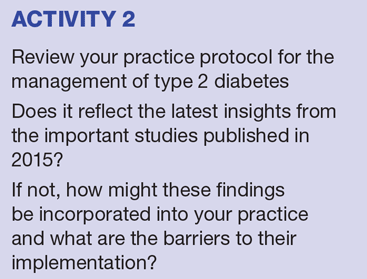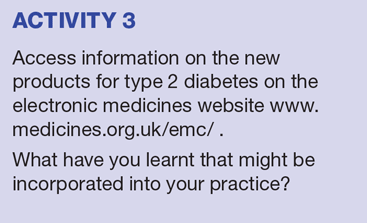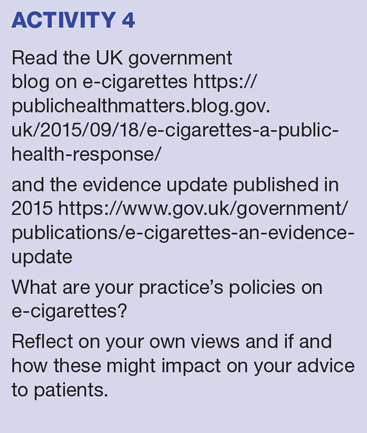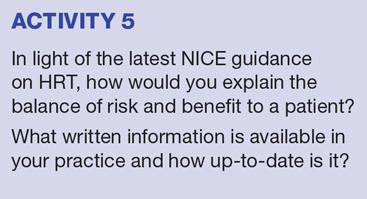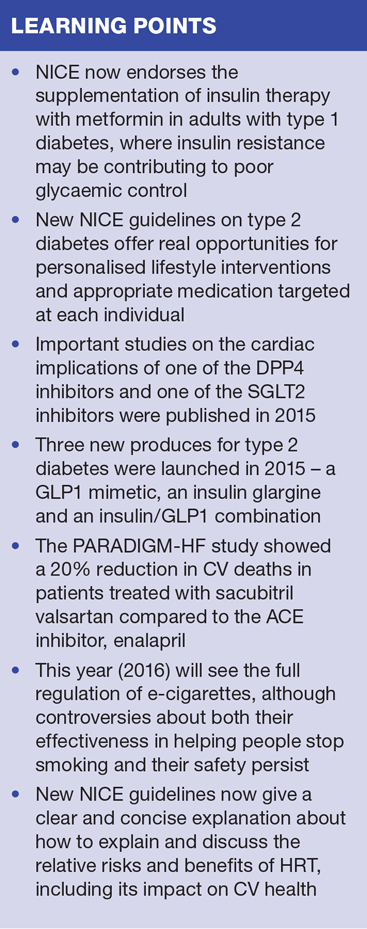The cardiovascular year: 2015 reviewed
Beverley Bostock-Cox, RGN, MSc, QN, Nurse Practitioner Mann Cottage Surgery, Moreton in Marsh, Clini...
Beverley Bostock-Cox, RGN, MSc, QN, Nurse Practitioner Mann Cottage Surgery, Moreton in Marsh, Clinical Lead, Education for Health Warwick
New therapies, new guidelines and new studies launched in 2015 will have implications for the care of patients with cardiovascular disease or risks well into 2016 and beyond. We review some of the most sigificant developments from the past 12 months and consider their implications for the future
As we ring out the old year and ring in the new, it is also out with much of the old and in with the new in the cardiovascular (CV) world. In this article we examine some of the big CV developments that hit the news in 2015 and consider how these are likely to impact on our practice into the future: from new approaches to treating heart failure, dyslipidaemia and type 1 diabetes, to the long-awaited NICE guidance on managing type 2 diabetes.
DIABETES
It may seem strange to begin an article entitled ‘The Cardiovascular Year’ with a discussion of the big events in diabetes care but diabetes is such a major risk factor for cardiovascular disease that in many quarters it is considered to be a CV disease in itself and therefore deserves prominence in this review.
Type 1 diabetes
The NICE guidance for type 1 diabetes for adults,1 and children,2 was updated last year, reiterating the need for vigilance regarding the diagnosis and the need for people with type 1 to be offered the same standards of care as those with type 2.
A novel approach to treatment, which was already being implemented by many, was also endorsed by NICE: that of supplementing insulin replacement therapy with metformin in adults with type 1. The rationale for this is that many people with type 1 diabetes are overweight and as a result develop a degree of insulin resistance, which may respond to metformin, resulting in better glycaemic control without the need to increase insulin doses. Insulin is known to lead to weight gain, in turn increasing insulin resistance. It would therefore seem to make sense to add metformin in people with type 1 diabetes where insulin resistance may be contributing to poor glycaemic control.
NICE guidance for type 2 diabetes
Like a much anticipated Christmas gift, the NICE guidance for type 2 diabetes finally arrived last month!3 So – was it worth the wait or is it a white elephant, destined only for the nearest jumble sale? Considering how the draft guidance was received earlier in 2015, (in other words, very badly), it was almost the case that the revamp had to be better. However, the final published version is actually a big improvement and offers clinicians a real opportunity to ensure that personalised lifestyle interventions and appropriate medication targeted at optimising benefits, while reducing associated risks, are used for each individual.
The new guidance reiterates the place of metformin as a first line treatment of blood glucose levels in view of its cardioprotective effects, but then opens up the field for second and subsequent intensifications, enabling clinicians to match interventions to the person who needs to take them. This is very much in line with the joint European and American guidelines,4 ensuring we offer a credible approach to managing diabetes along with our colleagues overseas. (See also The new NICE guidance for type 2 diabetes - was it worth the wait?)
New evidence for drugs used to treat type 2 diabetes
For several years, the FDA drug licensing body has required newer therapies for type 2 diabetes coming onto the market to prove that they do not increase CV risk. Nonetheless, these new drug classes continue to be monitored in practice and further trials are also carried out post marketing authorisation. Last year (2015) saw the publication of some interesting trials: one on the cardiac implications of one of the DPP4 inhibitors and another on one of the SGLT2 inhibitors.
TECOS (Trial Evaluating Cardiovascular Outcomes with Sitagliptin),5 looked at whether sitagliptin increased heart failure risk in people with diabetes and CV disease after a previous study, SAVOR-TIMI (Saxagliptin Assessment of Vascular Outcomes Recorded in patients with diabetes mellitus), showed a 27% increased risk of first hospitalisation for heart failure.6 The FDA was also concerned about an increased risk in all cause mortality in those taking saxagliptin. As a result of this study the FDA put a heart failure warning on both saxagliptin and alogliptin. Alogliptin had a small (and perhaps more debatable) signal for heart failure in its EXAMINE (EXamination of CArdiovascular OutcoMes: AlogliptIN vs. Standard of CarE in Patients with type 2 diabetes mellitus and acute coronary syndrome) study.7
TECOS, a large study involving 14,671 people, confirmed that sitagliptin, the longest serving DPP4 inhibitor, did not increase the risk of heart failure and had no signal for heart failure.5 This is important as the link between heart failure and diabetes has been recognised for some time. In the Framingham study,8 men aged 45 to 74 with diabetes had more than twice the frequency of heart failure as those without, whereas women with diabetes had a five-fold increased risk. Anything, therefore, which may increase risk should arguably be avoided if at all possible.
Another study reporting in 2015 looking at the cardiac implications of an oral hypoglycaemic agent was EMPA-REG (EMPAglifozin, cardiovascular outcomes and mortality in type 2 diabetes).9 This study looked at the long-term effects of empagliflozin, an SGLT2 inhibitor, versus placebo on CV morbidity and mortality in more than 7,000 patients with type 2 diabetes and at high risk of CV events. The findings were very interesting. They indicated that empagliflozin:
- Reduced the relative risk for 3-point MACE (time to first occurrence of CV death, non-fatal MI or non-fatal stroke) by 14%
- Reduced the relative risk of hospitalisation for heart failure by 35%
- Reduced the relative risk of CV death by 38%
- Improved survival by reducing the relative risk of all-cause mortality by 32%.
It will be interesting to see whether this further increases the use of SGLT2 inhibitors in 2016, particularly in high risk groups, following the warning about diabetic ketoacidosis in people on SGLT2 inhibitors that came earlier last year.10
New products for type 2 diabetes
New products for type 2 diabetes that came to the market in 2015 included:
- Trulicity, another once daily GLP1 mimetic
- Toujeo, (insulin glargine 300 units/ml)
- Xultrophy, an insulin/GLP1 combination.
Toujeo is a new version of insulin glargine which forms a more compact subcutaneous depot with a reduced surface area compared with Lantus (insulin glargine 100units/ml) and which allows for a slower, more prolonged release, potentially reducing the risk of hypoglycaemia in both type 1 and type 2 diabetes. Xultophy offers better control and fewer side effects than either treatment given alone.
HEART FAILURE
Early UK authorisation of a new heart failure drug, sacubitril valsartan (Entresto) is anticipated following a positive response from the Committee for Medicinal Products for Human Use. This new therapy was used in the PARADIGM-HF (Prospective comparison of ARNI with ACE-I to Determine Impact on Global Mortality and morbidity in Heart Failure) study, the world’s biggest heart failure trial.11 The trial was stopped early due to its impressive early results, which showed a 20% reduction in CV deaths when compared with patients who were treated with the ACE inhibitor, enalapril.
DYSIPIDAEMIA
A new injectable therapy for dyslipidaemia, which offers effective LDL cholesterol lowering for people where other therapies have proved inadequate, is now available. This class of lipid lowering agents is known as the PCSK9 inhibitors and they have been shown to reduce LDL cholesterol by more than 75% when compared with atorvastatin.12 There are now two of these drugs on the market, evolocumab (Repatha) and alirocumab (Praluent) although they may be in for a stormy ride from NICE who may not support their use because of a lack of evidence for their effect on CV events. NICE is due to deliver its full appraisal of these drugs in 2016.
E-CIGARETTES
Last year Public Health England took the step of endorsing the use of e-cigarettes and advising health care professionals to support people who wished to use this method to quit. However, this decision was not without controversy,13 and the research into e-cigarettes continues. Last month an American study suggesting a link between serious lung disease and some of the chemicals used to flavour e-cigarettes was published.14 Undoubtedly more research will follow.
This year (2016) will see the full regulation of e-cigarettes with only licensed retailers being able to supply them. E-cigarettes on prescription may soon be seen, too, after the first e-cigarette (e-Voke, produced by British American Tobacco) was licensed by the Medicines and Healthcare products Regulatory Authority earlier this month (January 2016). NICE recommends nicotine-containing products as a ‘harm reduction’ approach to smoking cessation and regulated products should therefore be prescribable on the NHS later in the year.15 The debate about whether this is a good idea or not continues!
HORMONE REPLACEMENT THERAPY
In November NICE published guidance on management of the menopause with and without hormone replacement therapy (HRT).16 The guidelines give a clear and concise explanation for clinicians about how to explain and discuss the relative risks and benefits of HRT, including its impact on CV health. The findings and recommendations of these guidelines are that HRT does not increase CV disease when started in women aged under 60 years, and that it does not affect the risk of dying from CV disease.
GENERAL PRACTICE NURSES AND CVD
In summary, it has been an interesting year for CVD and diabetes and 2016 will no doubt bring more studies, products and guidance to help us to both prevent and treat CV disease more effectively in the future. As always, the role of the general practice nurse as the patient’s advocate cannot be overstated and the 4 Ps of the NMC Code of Conduct –
1 – Prioritise people
2 – Practise effectively
3 – Preserve safety
4 – Promote professionalism and trust
– stand as a guiding light as we negotiate our way through new, exciting, but often challenging terrain.
REFERENCES
1 NICE. Type 1 diabetes in adults: diagnosis and management. NICE guidelines [NG17] 2015 https://www.nice.org.uk/guidance/ng17
2 NICE. Diabetes (Type 1 and type 2) in children and young people. NICE guidelines [NG18] 2015 https://www.nice.org.uk/guidance/ng18
3. NICE. Type 2 diabetes in adults. NICE guidelines [NG28] 2015 https://www.nice.org.uk/guidance/ng28
4. Inzucchi SE, Bergenstal RM, Buse JE et al. (2015) Management of Hyperglycemia in Type 2 Diabetes, 2015: A Patient-Centered Approach: Update to a Position Statement of the American Diabetes Association and the European Association for the Study of Diabetes. Diabetes Care 2015; 38: 140-149 http://care.diabetesjournals.org/content/38/1/140.extract
5. Green JB, Bethel MA, Armstrong PW, et al. Effect of Sitagliptin on Cardiovascular Outcomes in Type 2 Diabetes. N Engl J Med 2015; 373: 232-242 Available from http://www.nejm.org/doi/full/10.1056/nejmoa1501352
6. Scirica BM, Batt DL, Braunwald E, et al. Saxagliptin and Cardiovascular Outcomes in Patients with Type 2 Diabetes Mellitus. N Engl J Med 2013; 369:1317-1326 http://www.nejm.org/doi/full/10.1056/NEJMoa1307684
7. White WB, Cannon CP, Heller SR, et al.) Alogliptin after acute coronary syndrome in patients with type 2 diabetes. N Engl J Med 2013; 369:1327-1335
8. Kannel WB, Hjortland M, Castelli WP. (1974) Role of diabetes in congestive heart failure: The Framingham study. American Journal of Cardiology 1974; 34(1): 29-34
9. Zinman B, Wanner C, Lachin JM, et al. (2015) Empagliflozin, cardiovascular outcomes and mortality in type 2 diabetes. N Engl J Med 2015; 373: 2117-2128 http://www.nejm.org/doi/full/10.1056/NEJMoa1504720
10. European Medicines Agency. SGLT2 inhibitors. 2015 http://www.ema.europa.eu/ema/index.jsp?curl=pages/medicines/human/referrals/SGLT2_inhibitors/human_referral_prac_000052.jsp&mid=WC0b01ac05805c516f
11. McMurray JJV, Packer M, Desai AS, et al. Angiotensin-neprilysin inhibition versus enalapril in heart failure. N Engl J Med 2014; 371: 993–1004 http://www.nejm.org/doi/full/10.1056/NEJMoa1409077
12. Elvidge S. UK launch for cholesterol-lowering PCSK9 inhibitor. The Pharmaceutical Journal 2015; 295(7879):295, No 7879, online | DOI: 10.1211/PJ.2015.20069264
13. Galloway M. E-cigarettes: a Practice Nurse guide. Practice Nurse 2014; October: 16-18 http://www.practicenurse.co.uk/index.php?p1=articles&p2=1042
14. Allen JG, Flanigan SS, LeBlanc M, et al. Flavoring chemicals in e-cigarettes: diacetyl, 2,3-pentanedione, and acetoin in a sample of 51 produces, including fruit-, candy- and cocktail-flavored e-cigarettes. Environmental Health Perspectives 2015. DOI:10,1289/ehp.1510185 Available at http://ehp.niehs.nih.gov/15-10185/
15. McNeill A, Brose LS, Calder R, et al. E-cigarettes: an evidence update. Public Health England. 2015 https://www.gov.uk/government/uploads/system/uploads/attachment_data/file/454516/Ecigarettes_an_evidence_update_A_report_commissioned_by_Public_Health_England.pdf
16 NICE. Menopause: diagnosis and management. NICE Guidelines [NG23] 2015 https://www.nice.org.uk/guidance/NG23/chapter/Recommendations#managing-short-term-menopausal-symptoms
Related articles
View all Articles



